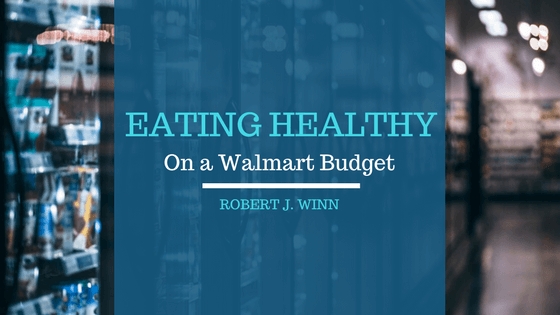Food is expensive. As kids, we don’t quite grasp the value of a $1.50 candy bar in the checkout line or the cost of a tiny container of out-of-season raspberries in the produce section. As we grow up, though, we begin to realize that the question our parents faced when we were young wasn’t: “What do you want to eat?” but “What can we afford to eat?” The cost of eating three square meals a day can stack up quickly – and knowing this, we tend to leap towards the seemingly cheap fast food or junk meal options with a lower sticker tag. But is eating healthy as expensive as it’s cracked up to be? With some forethought and strategic shopping at discount stores, it might not be. Here, I give a few tips for shopping affordably for healthy food at Walmart.
Have Basics On Hand
Wal-Mart is a great place to find versatile kitchen staples that you’ll need often, such as flour, sugar, pasta, and cooking oil. With a well-stocked pantry, you’ll be in a position to whip up basic recipes on a busy weeknight without needing to fall back on drive-thru takeout. Stock your shelves with the following staples:
Baking Supplies: Flour, sugar, salt, active dry yeast, baking soda
Canned/Dry Goods: Pasta, rice, tomato sauce, dry or canned beans, canned tomatoes
Oils and Sauces: Olive oil, vegetable oil, soy sauce, chicken bouillon or broth
Note: All of these ingredients have a long shelf life and can be stored for months at a time.
Shop Around
This may be a blog about shopping at Walmart, but you shouldn’t feel as though confining your shopping to one store will be the most affordable option! Depending on what you want, you might have better luck at the local dollar store, discount grocery market, or even a local farm stand. Try your local dollar or $5 store for low-cost spices! If you don’t have the time to compare costs, you can generally get a good deal on product sold under Walmart’s Great Value brand.
Freeze Everything
I’m not kidding. Freeze whatever you can, and use what you can’t. Meats should always be frozen immediately if you don’t plan on cooking them within two days; these can keep for two or more months in the freezer if wrapped properly. You can also save on food costs by making double recipes and freezing half for later – this strategy works well for homemade soups and casseroles. Generally, fresh vegetable will be cheaper and tastier than those you purchase frozen; however, you should never purchase vegetables that you don’t have an immediate use for. Otherwise, you may find yourself with a refrigerator of wasted produce (and money). Frozen fruits, in contrast, are a great alternative to expensive off-season fruits.
Be Cautious With Costco
Costco offers those on slim budgets the opportunity to save on food costs by buying in bulk. However, the store can be somewhat hit-or-miss; unless you enter into a membership with two or three friends or borrow a friend’s card, the membership fees might not be balanced out by what you save by buying in bulk. But if splitting the cost is feasible, you may be able to save on meats, cheeses, and kitchen basic like beans by shopping in bulk.
Don’t Buy What You Can Make
A frozen pizza might be an easy option for a busy night, but it’s chock-full of preservatives and goes for $7 a pop at Walmart. Steer clear of processed foods such as freezer dinners, frozen fried foods, or pre-made microwaveables that contain preservatives. Even though each individual box might not seem that expensive, the single servings tend to add up. For a healthier – and cheaper – alternative, consider using your kitchen basics to replace fast-food favorites! You can whip up a basic pizza dough with ingredients you have in your pantry, and freeze portions for future use!

